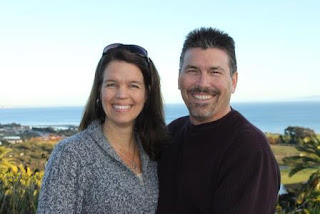Decline & Renewal, 9: Lynn Anderson Guest Column
Editor's note: I have the amazing fortune of being
able to publish several guest columns. Over the coming weeks, you'll read
thoughtful words from church leaders like Tim Spivey, Andy Wall, Stan Granberg,
Aaron Metcalf, Rick Gibson and more. I previously told the story about the
College Church of Christ in Fresno. We've already had guest articles from Sean Palmer, Steve Martin and Ben Ries.
Our fourth guest column is from an elder statesmen in Churches of Christ. Lynn Anderson loves the church and has worked tirelessly to support church leaders. He acutely understands our unique baggage and how to turn it over to God. He is a native of Canada's West Coast. The first 11 years of his full-time ministry were in British Columbia before taking the reins at the Highland Church of Christ in Abilene, Texas. Lynn has probably spoken at 45-50 West Coast churches over the years. He now lives with his wife Carolyn in San Antonio.
Our fourth guest column is from an elder statesmen in Churches of Christ. Lynn Anderson loves the church and has worked tirelessly to support church leaders. He acutely understands our unique baggage and how to turn it over to God. He is a native of Canada's West Coast. The first 11 years of his full-time ministry were in British Columbia before taking the reins at the Highland Church of Christ in Abilene, Texas. Lynn has probably spoken at 45-50 West Coast churches over the years. He now lives with his wife Carolyn in San Antonio.
Why are West Coast Churches of
Christ shrinking?
Churches
are shrinking across the nation (with few exceptions), and not just Churches of
Christ. Larger cultural trends are at odds of course, plus general recalcitrance
among churches. Most of you are likely more aware of those dynamics than I.
First, a
couple disclaimers: My early West Coast experience was in Canada where the
history of Churches of Christ differs significantly from the US. Also, in the last
few years, I have had direct interaction with only a few West Coast churches.
So my take may be wide of the mark and fairly dated.
That said,
here is my response to Jason’s specific question about church decline on the
West Coast:
First, our West Coast roots make us like a
banana tree in Canada—we’re foreign!
1. The
roots of many West Coast Churches of Christ go back to the “dust-bowl/grapes of
wrath” migration—and the resulting sub-culture. They were Bible-belt churches—a
subculture within a subculture—and most are not entirely free from those roots.
The “Arkie” and “Okie” enclaves weren’t just a literary caricature. Even churches that predated this migration were typically "overrun" by this wave of newcomers from the Bible belt.
2. The
timing of this migration coincided with the Bible-belt brand of religion and
cultural mores in key early influencers like T. B. Larimore, Foy Wallace, et
al.
3. In the inland,
agrarian communities away from the coast, those imported, Bible-belt perspectives
prevailed—some till today—allowing the subcultures to continue. For example,
just this week (March 11, 2013), a minister friend with San Joaquin Valley roots
told me his teen church memories include an annual “Missouri Picnic.”
4. In the
larger centers, with Hollywood, big business, the entertainment industry and
other secularizing factors, West Coast culture sped away from our churches ever
more rapidly. This soon forced the descendants of the Bible-belt migrants to
oscillate between “grandpa’s church culture” on Sundays and the exploding
West-Coast worldview (diversity, tolerance, secularism, prosperity, Hollywood,
big business, etc.) where they lived and worked the other 6 days of the week. Rather
than finding ways for the gospel to be lived out impactfully in their “new
world,” they lived compartmentalized lives. On Sundays, they were Arkies, Okies,
etc. The rest of the week, they adapted to the fast-paced world of commerce,
technology and secularism.
5. The
secular world and even the church world outside our churches increasingly
identified the Church of Christ (if they were even aware of us at all) as a
“foreign” church filled with Texans, Missourians, Alabamans, Tennesseans, and
Oklahomans—a “Bible-belt sect” attempting to “invade” California—and the rest
of the West Coast.
6. Instead
of hearing these concerns or looking for ways to bring the gospel to their new
and changing world, most churches merely “dug in and resisted”—only hardening
the shell on their Bible-belt and dust-bowl subculture churches. The theology,
hermeneutic, and worldview of the “Foy E. Wallace movement” sold well in that
environment, especially among those who were nostalgic for “the church of their
homeland” (i.e., Missouri, Arkansas, etc.) and fearful of “losing the church.”
The result? They doubled down: More fear, more rigidity, along with a fortress
mentality and isolation from the broader West Coast culture.
Second, our “kids & grandkids”
became Californians (& Oregonians, etc.) in all but their church life.
7. To complicate matters, the West Coast “grandkids” began to access more advanced
education, which only widened the paradigm and world-view gaps between them and
their church forebears. Once again, instead of bridging the gap by the power of
the gospel, the subculture of Bible-belt churches retrenched with a “fortress
mentality” against all the things that emerging adults experienced during the
week.
8. Fast-forward
several decades: Churches generally have been shrinking. Yes, some grew numerically,
but it was mostly transfers from dying churches, which created the illusion of
growth here and there, but these churches were not really growing. They were merely
consolidating failures.
9. Those few
Churches of Christ that did indeed appear to be “growing” were actually, mostly
receiving refugees from dying churches nearby. These refugees often attempted
to drag the growing churches back into the ideas and models of the dead
churches, thus eventually turning the growing churches into dying churches. I
could list examples, but I probably shouldn’t. You may already know these
churches.
Third, complicated changes set in,
and we no longer knew who we were.
10. Three
West Coast Cities became seedbeds for the cultural revolution of the 1960’s—Los
Angeles, San Francisco, and Seattle.
11. Population
explosion and culture shift overwhelmed the church leaders in these and
neighboring cities, only increasing the bewilderment, fear and entrenchment in
many valiant churches.
12. On top
of this has come the advance of Post-modernity. And we are a movement whose
thought-forms and models were shaped in Modernity. Thus our modes of persuasion
and communication have not been compelling in postmodern culture.
13. All the
while our educational institutions pumped out influential leaders who approached
the faith ever more cerebrally—and yet who all too often were still trapped in the
paradigm of Modernity. This was further complicated by another cross-current: for
decades the majority of the C of C college students who went to Christian colleges
went back to the Bible-belt colleges based mostly in small towns that are steeped
in Southern culture. Then, when and if they returned to become leaders in West
Coast churches (and IF is a key word here), they brought back with them some of
their Bible-belt world views, thus extending the life of Bible-belt ways in
West Coast churches. Yet all the while
the while, the culture of the West Coast was moving into a paradoxical hodge-podge
of pragmatism and Post-modernity, and ever more into secularism and hedonism.
Fourth, we turned either inward or
to ecumenicalism in order to survive.
14. Then as
churches became 3rd and 4th and 5th generation, those that survived developed a
more inward-focused form of the faith—full of consumers and observers. They
lost much of the “ownership” of a “battle-field, missionary, brave new
movement” mind-set. Others became enamored first with the church growth
movement, then the Rick Warren world, and now are fascinated with the Francis Chan
types of our Christian world.
15. Now some
churches try to “cherry-pick” the models, practices—and even theology—from some
of those worlds. And in so doing they risk at least two things: (1) losing
Biblical moorings and dissolving into the bland, pop-evangelical world on the
one hand; or (2) fearfully defaulting back into sectarianism, legalism and
separatism on the other.
Finally, we lack strong, contextual
leadership. And we may have forgotten the basics.
16. Of
course, the ubiquitous leadership vacuum has resulted in a host of churches
where “dysfunctional” is the new normal. This results in systems that stay
stuck and stucker, sick and sicker. But I guess this isn’t just a West Coast
problem.
17. There
are many other core issues. My ramblings of course do not attempt to elaborate on
obvious aspects such as (a) lack of real confidence in God; (b) loss of the
simple power of the gospel story; (c) lack of love of one another and for a
world that has hopelessly lost its way; (d) anemic investment in and service to
the community; (e) suspicion of concern for justice for the poor, the powerless
and marginalized, “pure religion” according to James (KJV). Etc. etc.
18. And—possibly
most significant of all—a low value on the power of Prayer, which is central to
the Christian faith and to vibrant ministry. Actually, prayer IS the ministry
and the rest of what we do is an answer to prayer.
------------------
Bio:
------------------
Bio:
After 35 years in local congregational ministry, Lynn Anderson launched Hope Network Ministries in 1996, a para-church ministry dedicated to coaching, mentoring, and equipping spiritual leaders. He received his DMin from Abilene Christian University in 1990, and has authored numerous books. Although he still speaks around the country, Lynn now enjoys semi-retirement after recovering from a difficult bout with cancer.




Comments